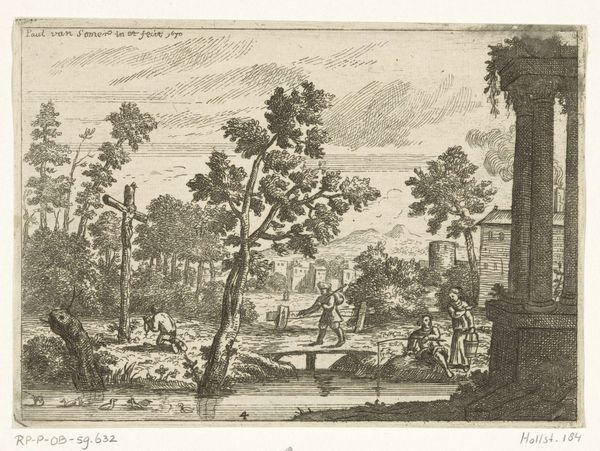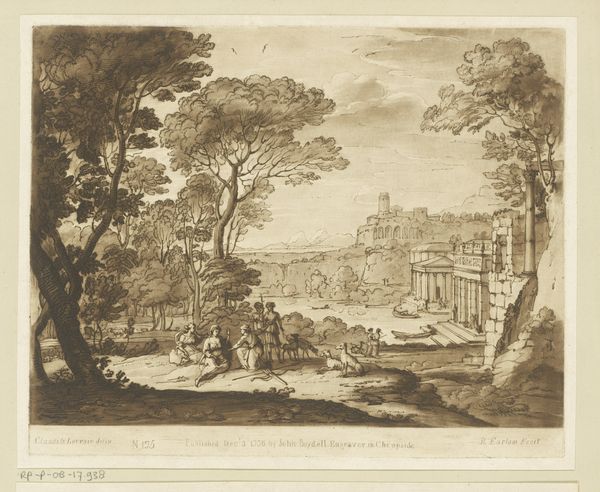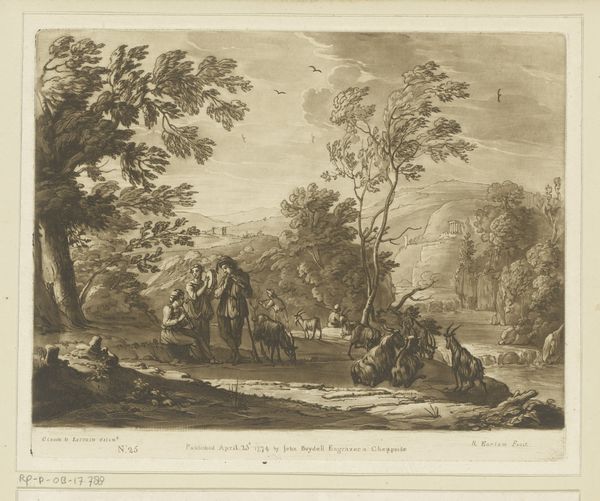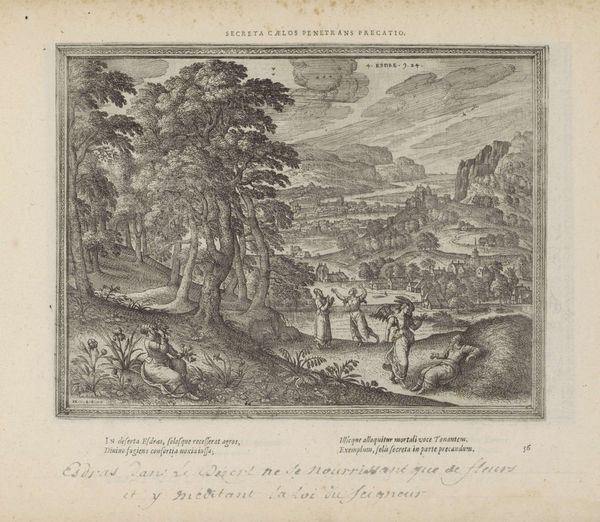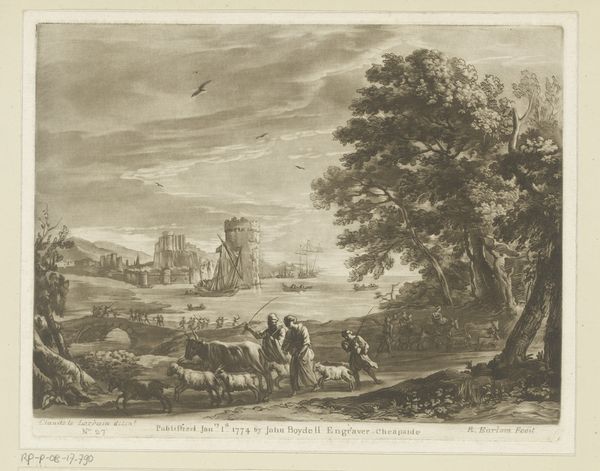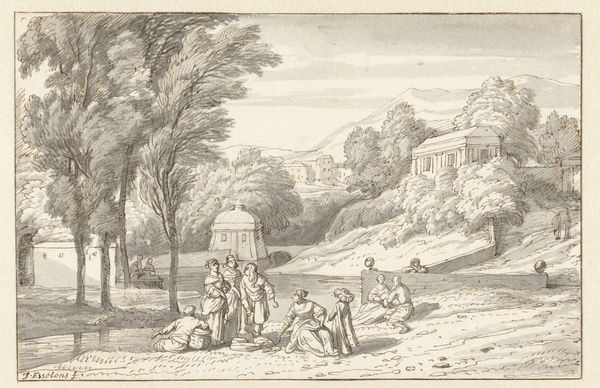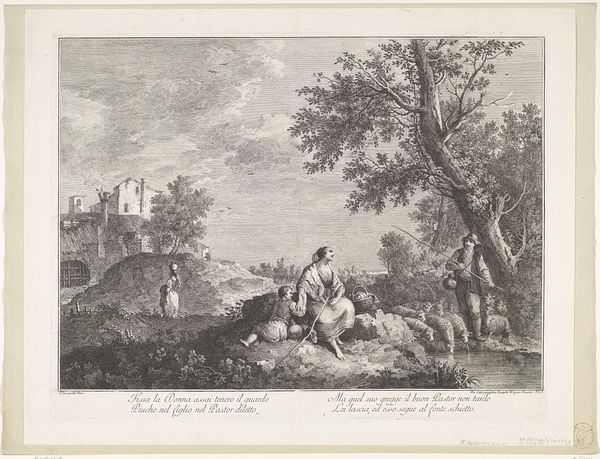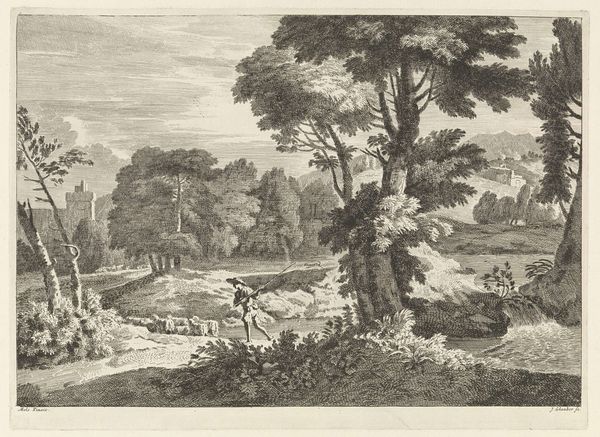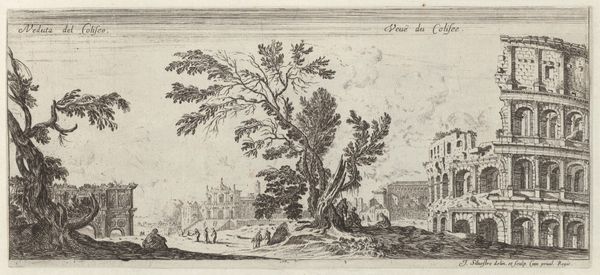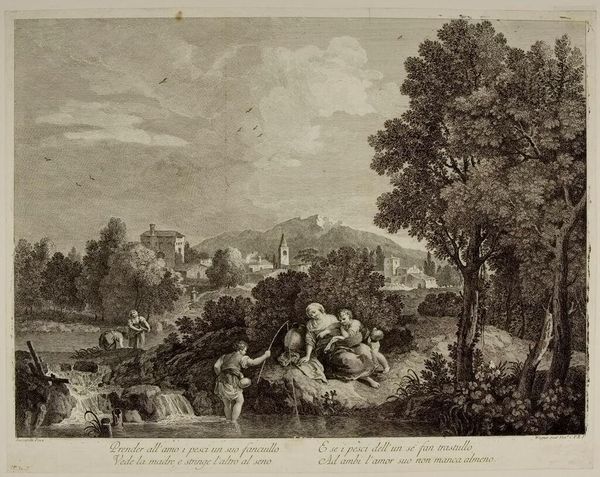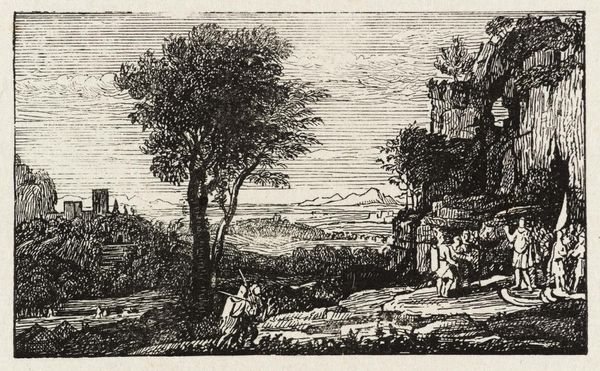
print, engraving
#
baroque
# print
#
landscape
#
charcoal drawing
#
line
#
engraving
Dimensions: height 247 mm, width 319 mm
Copyright: Rijks Museum: Open Domain
Editor: Nicolas Perelle's "Landschap," dating from around 1680 to 1695, is a beautiful engraving held here at the Rijksmuseum. I'm struck by the detail and the sense of depth he creates. It's so precise, especially given it's a print. How do you read a landscape like this in terms of its historical and social context? Curator: Landscape prints like these in the Baroque period often served multiple purposes beyond pure aesthetics. Consider the context of their distribution: these images helped shape a visual culture, disseminating ideas about nature, property, and even national identity. Ask yourself, what does this idealized landscape *do* for its viewers? Editor: "Do?" You mean besides just being pretty? Curator: Exactly. It's crucial to think about who this image was intended for, how it would have been viewed and circulated, and the kind of social values it reinforces. Does it evoke a sense of order and control over nature, reflecting perhaps the aspirations of a landowning class? Is it contributing to the emerging ideas about national identity and landscape? Editor: So it's not just about pretty scenery, but about power and ownership being communicated? That's fascinating. The figures seem almost incidental, which reinforces the idea of nature being primary, but perhaps only for those who have the privilege to appreciate it? Curator: Precisely. And what's the role of the museum today, in displaying an object that had a life propagating social values? The context and curation adds another layer to its understanding. Does exhibiting this piece now endorse these historic structures, critique them, or perhaps, provide opportunity to create new associations and awareness? Editor: I hadn't considered the museum's role in shaping our view of it. This piece is far more layered than I initially perceived, and there's much more to prints like this. Thanks for shedding a new perspective on how museums, galleries, and sociopolitical forces shape art. Curator: And thank you for making me think more consciously of the politics of displaying the images.
Comments
No comments
Be the first to comment and join the conversation on the ultimate creative platform.

